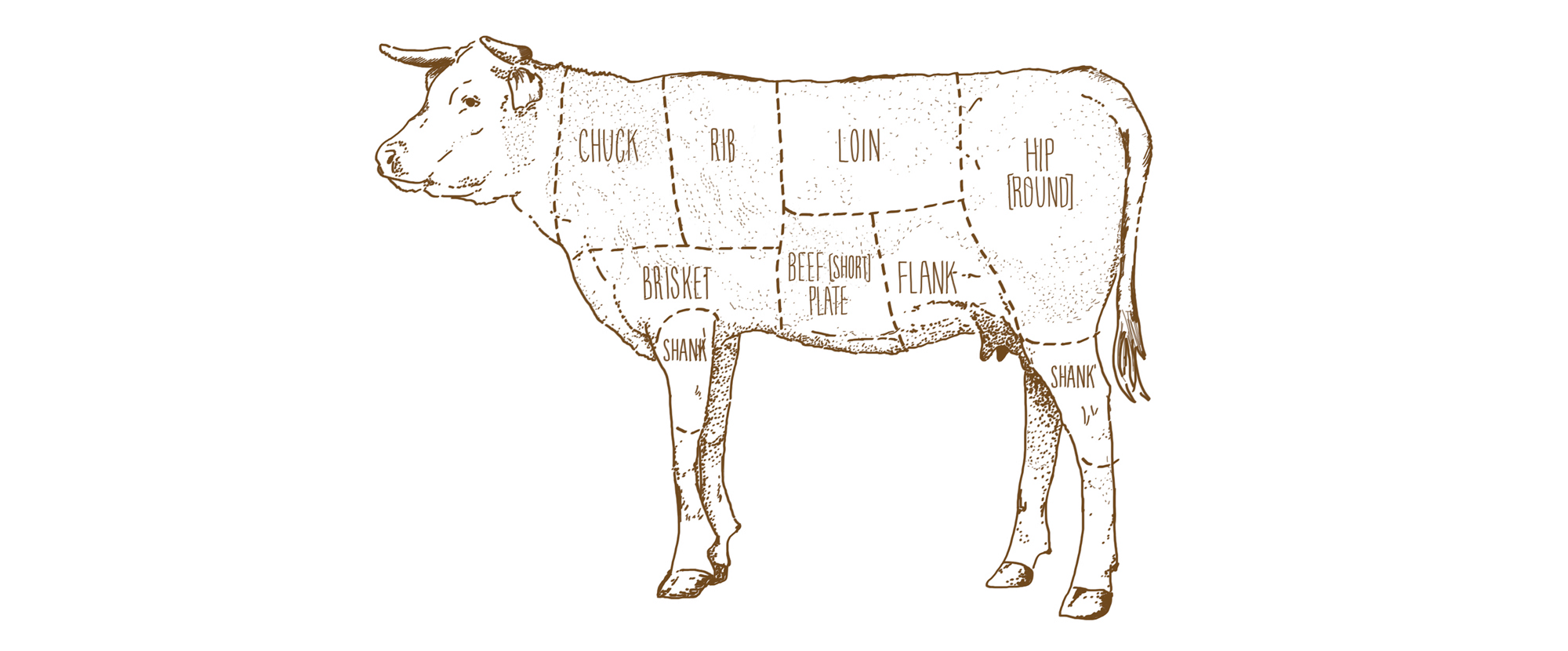Difference Between Top Round and Beef Chuck Roast
Beef is a source of iron, and many find it to be one of the richest-tasting proteins. It's a key ingredient in everything from stews to bolognese sauce to juicy burgers. You'll know you're buying fresh when the meat is dark red and firm to the touch. For meal planning, Canada's Food Guide recommends about 2 ½ ounces (75 grams) – roughly the size of a deck of cards – for each standard adult serving of cooked meat.
Beef is first divided into "primal" (basic) cuts and then further separated into different preparations.
And to help you stay on budget, we've broken down each category of meat into price ranges. The $ symbol indicates a more economical cut, and the * symbol means it's premium.
Primal Cuts

From the Chuck
Chuck:
Excellent for braising, these cuts have a hearty beefy flavour and are tenderized from moist-heat cooking.
Chuck roast:
A flavourful and versatile cut. Smaller roasts are lovely cooked to medium rare, while larger cuts are ideal for the slow cooker. Time will transform its toughness into tender delight!
Try it: Slow Cooker Beef Pot Roast
Blade roast or steak (boneless):
Blade roast is highly marbled and juicy. Pounding, marinating and slow cooking tenderize this cut's tough connective tissue. It can also be grilled or sautéed for tender and flavourful results.
Try it: Grilled Mexican-Style Steak Wrap
Brisket:
This tough, higher-fat cut needs to be cooked long and slow to become tender and tasty. It's worth the wait for its rich and strong flavour.
Try it: Braised Smoky Brisket with Sweet Onion and Chipotle Gravy
Shank:
The marrow and bone add flavour while braising and simmering in soups and stews. Brown before cooking for richly caramelized flavour.
From the Rib
* Beef ribs:
Also known as back ribs or ribs, these are sold in three-, four- or seven-rib slabs. Best braised or marinated and grilled.
* Beef ribs:
Also referred to as rib-eye roast or rib steak, this cut is tender, fine grained and generously marbled. The flavour is rich and beefy.
Try it: Prime Rib Roast with Shallot & Red Wine Gravy
* Rib-eye steak:
Also called prime rib (rib steak) without the bone, this cut is thick and juicy with generous marbling, plus tender and fine grained. It can be cooked on the grill or in a grill pan.
From the Loin
* Strip loin steak:
Also known as New York strip, this fast-cooking cut is sold with the bone in or boneless. It's lean and tender, with full flavour.
* T-bone:
Named after the T-shaped bone connecting its parts, this cut consists of the beefy, juicy strip loin and buttery-tasting tenderloin steaks.
* Tenderloin:
This prime cut has a buttery, mild yet succulent flavour. You can buy it whole or as a smaller, centre-cut piece. It's relatively lean and compact, and delicious when roasted. Filet mignon is a prime cut from the tenderloin, prized for its tenderness and buttery texture.
Try it: Roast Beef Tenderloin With Red Wine Sauce
* Top sirloin:
A cut that has medium marbling and very little connective tissue, it's extremely juicy, so it's excellent for grilling.
Try it: Rosemary-Garlic Grilled Steak
From the Flank
Flank steak:
It packs an incredible flavour punch, but this abdominal cut can be tough, so it's best marinated first and sliced very thin against the grain. Marinate, then grill or roast. A favourite for fajitas!
Try it: Spicy Steak Tacos
From the Hip (Round)
Stewing beef:
Ideal for braising, this meat is usually cut from the round.
Round roasts:
Cuts include inside round, outside round and eye of round. Economical and semi-tender, these cuts are best for braising, but smaller cuts can be oven roasted.
From Various Cuts
Ground beef:
Versatile ground meat, which can be baked, broiled, grilled or pan-fried and used in a wide variety of recipes. It's available medium, lean and extra-lean. (It can be made from various cuts, including round and sirloin.)
Try it: Handmade Beef Burger
How to Carve Beef Like a Pro
- Let your beef rest – tented under aluminum foil – for 10 to 15 minutes before carving, to allow juices to redistribute.
- Secure your carving board on a damp dishtowel so it doesn't move as you slice.
- Using a long, extra-sharp knife, cut meat against the grain. The lighter your pressure the better, in order to keep the juice in your beef.
- Secure the beef with a meat fork (or a large table fork), inserted just half an inch (one centimetre), as you slice. Again, using a light pressure is ideal.
- If your cutting board doesn't have a well, place it inside a baking sheet or tray so you can capture any juices. Tip: Add juices using light to the gravy for extra flavour.
mockridgeinateptind.blogspot.com
Source: https://www.sobeys.com/en/articles/ultimate-guide-beef-cuts/